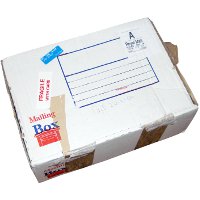How to Create a Return Shipping Label
 According to statistics, 15 to 40% of online purchases are returned, compared to about 9% in traditional brick-and-mortar stores. However, over 90% of consumers will buy again from a store even after returning a purchase if the store makes it easy for them to make a return and offers free return shipping. One of the simplest ways for small e-commerce businesses to handle returns is to provide their customers with a return shipping label.
According to statistics, 15 to 40% of online purchases are returned, compared to about 9% in traditional brick-and-mortar stores. However, over 90% of consumers will buy again from a store even after returning a purchase if the store makes it easy for them to make a return and offers free return shipping. One of the simplest ways for small e-commerce businesses to handle returns is to provide their customers with a return shipping label.
The fact that a customer wants to return their purchase does not necessarily mean that there is something wrong with the goods, although damaged or defective products, products looking different than expected, and wrong items do belong to the top reasons why consumers return purchases. Sometimes customers simply change their minds or return purchases due to a delay in delivery that the carrier is responsible for.
For most customers, the chance to return items to the store easily and free of charge contributes to a positive shopping experience despite the return. Such customers are more likely to give the store another chance and make another order. To improve customer experience and build customer loyalty, some online shops provide their customers with return shipping labels.
A return shipping label is a prepaid or scan-based shipping label (we’ll explain the difference below) with the store’s address. All a customer needs to do to return their purchase is affix this label to the box and drop it off at the carrier’s office. In addition to improving shopping experience and encouraging customers to make another purchase in the future, return shipping labels have a few more benefits for online retailers.
First, they help businesses ensure that the return address is correct and that the package doesn’t get lost in transit. Second, they give the freedom to choose the postal or courier service and help reduce shipping costs. In other words, return shipping labels give businesses full control over the return process and help reduce operating costs and expenses.
A return shipping label is created the same way as a regular shipping label. The only thing you need to do differently is enter your address where the recipient’s address is supposed to be. You can generate return shipping labels from your USPS/UPS/FedEx account or you can use a third-party service, for example, PostageMaker.
With PostageMaker, you can easily create prepaid shipping labels with a significant discount to make returns easier for your customers and save money. All you need to do is sign up for the service, add funds to your account in the system (we accept payments via credit/debit cards, PayPal and Bitcoin), enter the sender’s and recipient’s addresses (keeping in mind that in this case, you are the recipient), and choose the shipping carrier and service.
When your prepaid shipping label is generated, the postage is charged from your PostageMaker account. Once the label is ready, you can download it as PDF and e-mail it to the customer who wants to return their purchase along with the following instructions: print the label using a regular printer and office paper, attach it to the package, and mail the package back to the sender.
Some retailers print return shipping labels beforehand and include them in all outbound parcels. In such a case, creating prepaid shipping labels makes little sense because customers might end up not returning their purchases, and retailers end up requesting refunds for return shipping labels that haven’t been used.
In such situations, you should use scan-based (pay-on-use) return labels instead of prepaid return labels. They are only charged upon use, i. e. when a carrier scans them into the system, so you won’t get charged for unused labels. However, you should keep in mind that scan-based return labels may be not available for lightweight parcels; in addition, some carriers apply additional surcharges and fees to this type of shipping labels.
To sum it up, providing your customers with prepaid return shipping labels upon request helps demonstrate that your business is trustworthy and customer-oriented. It will improve your reputation even when customers choose to return a purchase, as well as encourage positive feedback and boost return customer rates.